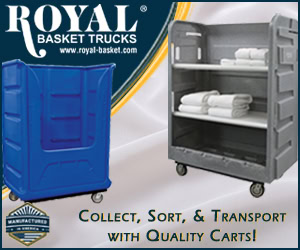Workers’ compensation claims can represent a significant financial burden for businesses. But with a proactive and strategic approach, these costs can be effectively managed and reduced. The following seven key strategies provide a comprehensive approach to controlling workers’ compensation costs, while maintaining a safe and supportive work environment for employees.
- Early Return to Work
One of the most effective ways to reduce workers’ compensation costs is to facilitate an early return- to-work program. Employees who are injured at work often benefit from staying active and engaged in light-duty tasks, rather than remaining off work for an extended period. An early return to work not only helps reduce the overall claim duration but also keeps workers involved in the workplace environment, aiding in their mental and emotional recovery. It’s essential to establish clear guidelines for modified work duties. To facilitate this process, you also must ensure smooth and effective communications among healthcare providers, managers and the employee.
- Safety Committee
Implementing a safety committee in the organization is crucial for identifying hazards, ensuring compliance with safety regulations and promoting a culture of safety across the workforce. A proactive safety committee, which includes representatives from various departments, can regularly review workplace risks, investigate accidents and recommend improvements. A well-organized committee helps to prevent accidents before they happen, reducing the likelihood of injuries and, in turn, minimizing workers’ compensation claims. The best method for forming a committee is a top-down approach. Upper management needs to have a huge presence in the safety culture.
- Onboarding and Safety Orientation
Comprehensive onboarding and safety orientation for new employees is an essential step in minimizing workplace injuries. Ensuring that new hires are well-versed in company safety protocols, emergency procedures and the proper use of equipment from day one can significantly reduce the risk of accidents. Clear communication of expectations around safe practices will help employees understand their role in maintaining a safe working environment and the importance of reporting hazards promptly.
- Pre-Employment Screenings
Pre-employment screenings, including physical exams and drug tests, are effective tools for identifying potential risks before hiring an employee. Assessing a candidate’s physical and mental fitness for the role can help ensure that they can perform job duties without risking injury. Pre-employment screenings can also reduce the likelihood of hiring individuals who might be prone to injuries due to pre-existing conditions or other risk factors. These steps can ultimately help control workers’ compensation costs.
- Mentorship and Shadowing
Mentorship and job shadowing programs are valuable tools for helping new employees learn the ropes in a safe, controlled manner. When employees are paired with experienced mentors, they benefit from hands-on guidance in safely performing tasks. These steps minimize the likelihood of errors that could lead to injury. Mentorship can also help foster a culture of safety by encouraging workers to support one another in maintaining best practices for workplace safety.
- Safety & Health Management
A comprehensive safety and health management program that includes ongoing training, regular safety audits and a culture of continuous improvement is key to minimizing workplace injuries. Ensuring that all employees—from management to front-line workers—are trained to identify and address safety hazards is fundamental. Regular inspections of the workplace and equipment, along with addressing any identified risks immediately, contribute to maintaining a safe environment and reducing injuries.
- Cameras for Fraud Protection (Fleet & Inside Operations)
Cameras, both in the fleet and in the operations area, serve as a strong deterrent against fraud and misconduct. In the case of fleet vehicles, dash cams can provide crucial evidence in the event of an accident, helping to protect against fraudulent claims. Additionally, having cameras in the operations area can monitor compliance with safety protocols, identifying any unsafe behavior or risks in real time. This level of surveillance not only helps in preventing accidents but also protects the company from fraudulent workers’ compensation claims. These issues can arise if injuries are exaggerated or fabricated. The rise of artificial intelligence in the workers’ compensation industry has opened new opportunities for enhancing risk-management strategies. As technology advances, the ability to identify and address daily risks is becoming increasingly effective. Artificial Intelligence can now detect improper ergonomic movements, pinpoint potential hazards and identify unsafe actions—such as pinch points—helping to improve overall workplace safety.
Bottom Line: Fewer Incidents = Lower Costs, Better Morale
By focusing on these key strategies—early return to work, safety committees, onboarding and safety orientations, pre-employment screenings, mentorship programs, comprehensive safety and health management, and fraud protection through camera surveillance—companies can effectively manage and reduce their workers’ compensation costs. Creating a culture of safety and proactive risk management benefits both employers and employees, leading to a safer, more productive workplace.
Editor’s note: Haylor, Freyer & Coon Inc., Syracuse, NY, is a TRSA Business Partner. Companies that participate in this initiative offer members-only programs that reduce risks and control costs, while enhancing your company’s profitability. TS
MICHAEL RAYO is risk advisor to Haylor, Freyer & Coon Inc., Syracuse, NY. Contact him at 313.956.4104 or mrayo@haylor.com.
Byline
By Michael Rayo
Categories
Magazine Article Type
Feature
Starting Page
40





